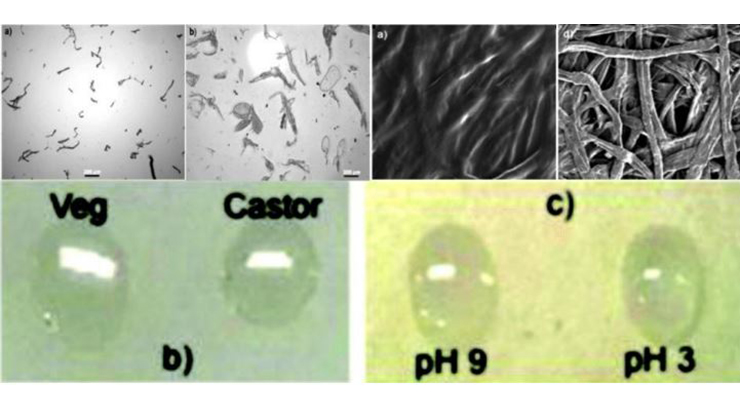Improved Biopolymer Coatings for Packaging Materials
ID# 2012-3956
Technology Summary
This technology is a composition comprising one or more cationic polymers (e.g., chitosan) and one or more anionic polymers (e.g., carboxymethyl cellulose), which are combined in a polar solution and vigorously blended to obtain a polymer blend wherein the viscosity or particle size of the cationic polymers and the anionic polymers is reduced after the blending. The resultant composition can be employed as a coating to improve the surface properties for a wide range of materials (e.g., wood or paper products) or could be used as an adhesive. The figure above shows a scanning electron microscope image of a cross section of a cellulose paperboard sheet coated with a polymer blend. The polymer blend coating is clearly seen on the surfaces and measures approximately 15 microns in thickness.
Application & Market Utility
Sustainable, cost effective and ecologically compatible materials are needed for a diverse array of volume commercial applications that currently employ synthetic alternatives. Biologically derived polysaccharides such as cellulose, starch and chitosan are among the lowest cost, highest volume biomaterials produced globally. New processes for forming materials based on polyelectrolyte complexation of these polysaccharides opens up new opportunities for the development of biomaterials that challenge the performance and cost of synthetics.
Next Steps
Seeking research collaboration and licensing opportunities.

